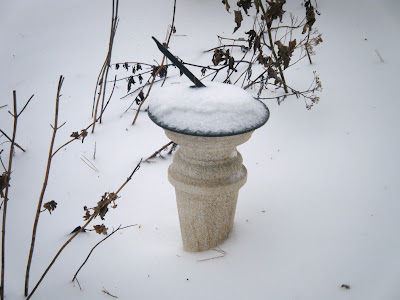
A photo above from the Associated Press yesterday
Atlanta is completely snowed (iced) in, so there's little to do but clean the house, cook, and join those who find it necessary to update their respective Facebook pages every three minutes. I've cleaned the house, cooked, and yes, I must admit that I've done a little updating to my own account in the past couple of days, but hopefullly won't reach the point at which I "check in" at Starbucks, Publix, the library, Burger King, etc., etc. When I start posting that I'm "on the way to the gym, at the gym, sweating at the gym, leaving the gym, home from the gym, (in five separate posts)" please slap me.
Can you tell that I'm a little crazy with this weather??? This is NOT why I moved south from New England! If the sun doesn't come out again today, I'm going to start putting those big airport runway lights in the Stepchild Garden.
In any case, here's one of the soups I made yesterday to stock the freezer. It's from an old Mayo Clinic-Williams Sonoma cookbook, so it's even good for you!
Lentil Soup
16 oz. dried lentils
7 cups water
4 c. vegetable broth
4 carrots, chopped
1 large onion, chopped
4 celery stalks, chopped
1 cup salsa
Fat Free Sour Cream
Pick over the lentils, rinse under cold water, and drain.
In a large pot, bring the lentils, water, broth, veggies and salsa to a boil. Reduce to a simmer, cover, and continue to cook for 45 minutes, or until the lentils are tender. If the soup is too thick, add a little more water.
Garnish with the Sour Cream, if you want.
A Note About the Salsa: The cookbook suggests making your own fresh salsa, which you certainly can do. Since this is really not the season for great tomatoes, I rely upon Herdez Salsa Casera, which my friend Rafael uses often as a cooking base for soups and sauces. He is an incredible cook, and is originally from Merida (the Yucatan peninsula of Mexico). The Herdez products are actually from Stockton, California, and this salsa is usually in small cans in the Hispanic foods section of the supermarket. It has a depth of flavor without being "burn your face off hot," like many commercial salsas.































